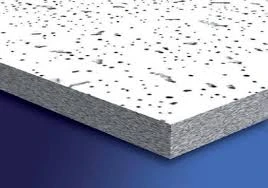Dec . 18, 2024 00:43 Back to list
waterproof access panel
Understanding Waterproof Access Panels Essential Solution for Building Maintenance
Access panels are crucial components in modern construction, serving as gateways to concealed areas within walls, ceilings, or floors. Their primary function is to provide convenient access to essential services such as plumbing, electrical wiring, and HVAC systems. Among various types of access panels, waterproof access panels stand out as a specialized solution, especially in environments where moisture and water exposure are prevalent. This article delves into the significance, features, and applications of waterproof access panels in building construction and maintenance.
Importance of Waterproof Access Panels
Waterproof access panels are designed to withstand moisture and prevent water ingress. They are indispensable in areas such as bathrooms, kitchens, and basements, where exposure to water is frequent. The importance of these panels cannot be overstated. Without adequate protection against water infiltration, structural damage can occur, leading to costly repairs and safety hazards. Mold and mildew growth is another significant concern in damp environments, as it poses health risks to occupants and can damage building materials.
Choosing waterproof access panels ensures that users have a reliable solution to maintain and inspect essential utilities without compromising the integrity of the building. These panels allow easy access while ensuring that water and moisture stay where they belong—outside of the structure.
Features of Waterproof Access Panels
When selecting waterproof access panels, several features should be considered to ensure optimal performance
1. Material Waterproof access panels are commonly made from materials like galvanized steel, stainless steel, or high-density polyethylene (HDPE). These materials are resistant to corrosion, rust, and deterioration caused by water exposure.
2. Sealing Mechanisms Effective sealing is crucial for waterproof access panels. High-quality panels often feature gaskets and seals made from rubber or silicone that create a watertight barrier when the panel is closed. This feature minimizes the risk of water infiltration.
3. Design and Closure Many waterproof access panels have a flush or concealed design, making them aesthetically pleasing while also providing functionality. A secure locking mechanism protects the contents behind the panel and prevents unauthorized access.
4. Versatility Waterproof access panels come in various sizes and configurations, making them suitable for different applications. Custom sizes can also be fabricated to fit specific needs, enhancing their adaptability in various construction settings.
waterproof access panel

5. Fire Resistance In some instances, waterproof access panels are also designed to be fire-resistant, adding an extra layer of safety for essential services located in high-risk areas.
Applications of Waterproof Access Panels
Waterproof access panels are utilized in a wide range of settings, each requiring reliable access while minimizing water exposure risks. Some common applications include
- Commercial Kitchens In restaurants and food service establishments, waterproof access panels provide access to plumbing and electrical systems that require frequent inspection and maintenance.
- Restrooms In public restrooms, waterproof access panels ensure that plumbing fixtures and piping are easily accessible for repair while protecting against water damage from splashes and spills.
- Swimming Pools In pool areas, waterproof panels allow access to essential equipment and systems, such as pumps and filters, while preventing moisture from infiltrating surrounding structures.
- Basements and Crawl Spaces These areas are often prone to humidity and water ingress. Waterproof access panels in these spaces ensure that maintenance can be performed without exposing structural components to moisture.
- Hospital and Laboratory Environments In health care and research facilities where cleanliness and hygiene are paramount, waterproof access panels help maintain access to vital systems while preventing contamination.
Conclusion
In summary, waterproof access panels are vital components that enhance building maintenance and integrity in moisture-prone environments. Their robust construction, effective sealing mechanisms, and adaptability for various applications make them an essential choice for builders and facility managers. Investing in high-quality waterproof access panels is a proactive measure that ultimately contributes to the longevity and safety of any building. Whether in commercial or residential spaces, these panels play a critical role in ensuring that access does not come at the expense of structural integrity.
-
Quality Ceiling Trap Doors & Access Panels | Easy & Secure AccessNewsAug.30,2025
-
Durable Ceiling T Grid Systems | Easy InstallationNewsAug.29,2025
-
PVC Gypsum Ceiling: Durable, Laminated Tiles for Modern SpacesNewsAug.28,2025
-
Pvc Gypsum Ceiling Is DurableNewsAug.21,2025
-
Mineral Fiber Board Is DurableNewsAug.21,2025
-
Ceiling Tile Clip Reusable DesignNewsAug.21,2025







